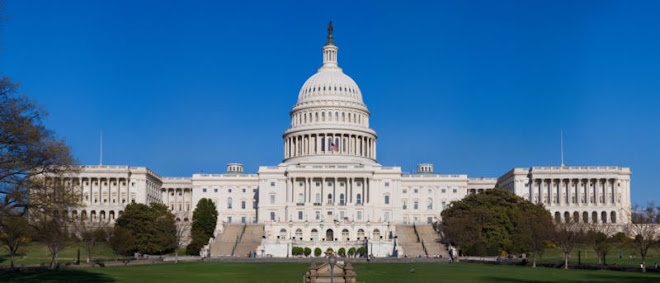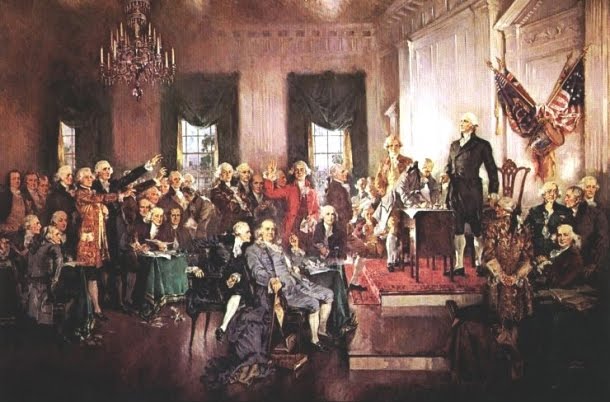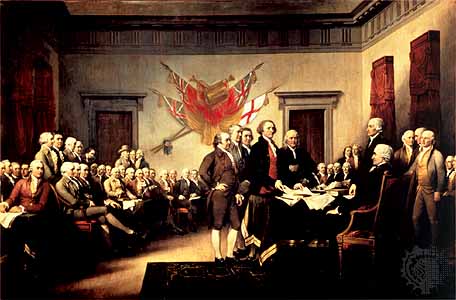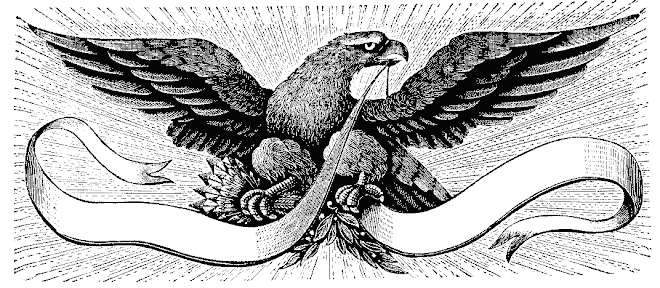From The New York Times:
The State of ConservatismBy CHRISTOPHER CALDWELL
Published: October 21, 2010
Recommend
Twitter
Sign In to E-Mail
Print
Single Page
Reprints
Share
Close
LinkedinDiggMixxMySpaceYahoo! BuzzPermalink. Within the space of a week last summer, one judge in Arizona, ruling in a suit brought by the Obama administration, blocked a provision in a new state law permitting police officers to check the status of suspected illegal immigrants, while another blocked the implementation of a California referendum banning gay marriage. The two decisions imposed liberal policies that public opinion opposed. These things happen, of course. Congress had acted contrary to measurable public opinion when it passed health care reform in March. What made the two judicial rulings different was that both seemed to challenge the principle that it is the people who have the last word on how they are governed.
Enlarge This Image
Paul Sahre
Multimedia
Also in the Book Review
The State of Liberalism (October 24, 2010)
Essay: The Myth of Consensus Politics (October 24, 2010)
Related in Opinion
Is Outsider Politics Here to Stay?
Voter anger has defined this campaign season. Will that mood last longer than a single election cycle?
Join the Discussion
.American conservatives, most notably the activists who support various Tea Party groups, have a great variety of anxieties and grievances just now. But what unites them all, at least rhetorically, is the sense that something has gone wrong constitutionally, shutting them out of decisions that rightfully belong to them as citizens. This is why many talk about “taking our country back.”
If polls are to be believed, conservatives should have no difficulty taking the country back or doing whatever else they want with it. Gallup now counts 54 percent of likely voters as self-described conservatives and only 18 per cent as liberals. More than half of Americans (55 per cent) say they have grown more conservative in the past year, according to the pollsters Scott Rasmussen and Doug Schoen in their new book, MAD AS HELL: How the Tea Party Movement Is Fundamentally Remaking Our Two-Party System (Harper/HarperCollins, $27.99).
America’s self-described conservatives, however, have a problem: They lack a party. While the Tea Party may look like a stalking horse for Republicans, the two have been a bad fit. Insurgents have cut a swath through Republicans’ well-laid election plans. They helped oust Florida’s party chairman. They toppled the favored candidates of the party establishment in Alaska, Colorado, Delaware, Florida, Kentucky, New York, South Carolina, Utah and elsewhere.
More than 70 percent of Republicans embrace the Tea Party, but the feeling is not reciprocated. If conservatives could vote for the Tea Party as a party, they would prefer it to the Republicans, according to Rasmussen. (Lately, Rasmussen’s polling, more than others’, has favored Republicans. Not coincidentally, perhaps, it has picked up certain recent shifts earlier and more reliably — like the surge that won the Republican Scott Brown the late Ted Kennedy’s Massachusetts Senate seat in January.) Much of the Tea Party is made up of conservative-leaning independents. The journalist Jonathan Rauch has called these people “debranded Republicans,” and they are debranded for a reason — 55 percent of them oppose the Republican leadership. While Republicans are likely to reap all the benefit of Tea Party enthusiasm in November’s elections, this is a marriage of convenience. The influential conservative blogger Erick Erickson of RedState.com, insists that one of his top goals is denying the Republican establishment credit for any electoral successes.
Hence the Republicans’ problem. After November, the party will need to reform in a conservative direction, in line with its base’s wishes, and without a clear idea of whether the broader public will be well disposed to such reform.
How Republicans wound up in this situation requires one to state the obvious. Well before George W. Bush presided over the collapse of the global financial system, a reasonable-sounding case was being mustered that he was the worst president in history. Foreign policy was the grounds on which voters repudiated him and his party, starting in 2006, and President Obama’s drawdown of forces in Iraq may be the most popular thing he has done. But foreign policy is unlikely to drive voters’ long-term assessment of the parties. The Iraq misadventure was justified with the same spreading-democracy rhetoric that Bill Clinton, Madeleine Albright and other Democrats used to justify interventions in Haiti and the Balkans in the 1990s. President Obama’s difficulties in resolving Afghanistan and closing Guantánamo show that Bush’s options were narrower than they appeared at the time.
Republicans’ future electoral fortunes will depend on domestic policy and specifically on whether they can reconnect with “small-c” conservatism — the conservatism whose mottoes are “Neither a borrower nor a lender be” and “Mind your own business,” and the opposite of which is not liberalism but utopianism. The Bush administration was a time of “big-C” Conservatism, ideological conservatism, which the party pursued with mixed results. As far as social issues were concerned, this ideology riveted a vast bloc of religious conservatives to the party, and continues to be an electoral asset (although that bloc, by some measures, is shrinking). Had gay marriage not been on several state ballots in 2004, John Kerry might now be sitting in the White House.
Ideological conservatism also meant “supply-side economics” — a misnomer for the doctrine that all tax cuts eventually pay for themselves through economic growth. The problem is, they don’t. So supply-side wound up being a form of permanent Keynesian stimulus — a bad idea during the overheated years before 2008. Huge tax cuts, from which the highest earners drew the biggest benefits, helped knock the budget out of balance and misallocated trillions of dollars. To a dispiriting degree, tax cuts remain the Republican answer to every economic question. Eric Cantor, potentially the House majority leader, told The Wall Street Journal that if Democrats went home without renewing various Bush-era tax cuts (which they did), “I promise you, H.R. 1 will be to retroactively restore the lower rates.”
Until recently, supply side was political gravy for Republicans. It confirmed the rule that in American politics the party most plausibly offering something for nothing wins. In the 1980s, the New York congressman Jack Kemp was the archetype of an ambitious, magnanimous, “sunny” kind of Republican who let you keep more of your taxes while building more housing for the poor. Democrats who questioned the affordability of these policies sounded like killjoys. In a time of scarcity like our own, calculations change. Today your tax cut means shuttering someone else’s AIDS clinic. Your welfare check comes off of someone else’s dinner table.
Deficits in the Obama era are a multiple of the Bush ones, and the product of a more consciously pursued Keynesianism. But that does not absolve Republicans of the need to find a path to balancing the budget. With some exceptions — like Representative Paul Ryan of Wisconsin, a Kemp protégé who has laid out a “Road Map” for reforming (i.e., cutting) Social Security in coming generations — Republicans have not adjusted to zero-sum economics. There is certainly no credible path to budget balance in the “Pledge to America” released in late September.
Yet the case against supply-side economics can never be airtight or decisive, and Republican tax promises will probably help the party this year. That is because taxes are not just an economic benchmark, but a political one. The public should not expect more in services than it pays in taxes. But the government should not expect more in taxes than it offers in representation. And the number of Americans who feel poorly represented has risen alarmingly during the Obama administration.
Americans’ feelings toward the president are complex. On the one hand, there is little of the ad hominem contempt that was in evidence during the Clinton and Bush administrations. There are no campaign spots showing a Congressional candidate’s face morphing into Obama’s. But the president’s ideology, fairly or not, has provoked something approaching panic. Not many Americans agree that Obama is a closet totalitarian, as the Fox News host Glenn Beck has claimed. But they have serious misgivings of a milder kind.
In retrospect it looks inevitable that Republicans would have been punished by voters in 2008; but until Lehman Brothers collapsed in mid-September of that year, it was far from certain they would be, despite strong Democratic gains in the 2006 elections. Independent and Republican voters wanted an assurance that Senator Obama would not simply hand over power to the Democratic Party. He consistently provided it. The centerpiece of his campaign was a promise of post-partisanship. He introduced himself as a Senate candidate in 2004 at the Boston convention, deriding as false the tendency of pundits to “slice and dice our country into red states and blue states” — a bracingly subversive thing to do at a partisan convention. He praised Ronald Reagan.
And in 2008 he got more than 52 percent of the vote, a higher percentage than many political consultants thought possible for a Democrat. That means he came into office unusually dependent on the good will of independents and Republicans. And yet, once in power, the president set to work enacting the agenda of the same Congressional Democrats he had implied he would keep at arm’s length. No president in living memory has compiled a slenderer record of bipartisanship.
It is often said in the president’s defense that Republican obstructionism left him no choice. Today, this is true — and it has put an end, for now, to the productive part of his presidency. But it was not true at the time of the stimulus in early 2009, when the president’s poll numbers were so stratospherically high that it appeared risky to oppose him on anything. Republicans certainly cannot be blamed for the way Democrats passed their health care bill. Whether or not the deal-making and parliamentary maneuvering required to secure passage was unprecedented, it was unprecedented in the era of C-Span and blogs, and many voters found it corrupt. The president’s legislative program has been bought at a huge price in public discontent. The expression “picking up nickels in front of a steamroller” has been used to describe a lot of the gambles taken by A.I.G. and other companies on the eve of the financial crisis. It describes the president’s agenda equally well.
It is vital to understand where this steamroller is coming from. According to Gallup, support for Obama has fallen only slightly among Democrats, from 90 percent to 81 percent, and only slightly among Republicans, from 20 percent to 12 percent. It is independents who have abandoned him: 56 percent approved of him when he came into office, versus 38 percent now. The reason the country is getting more conservative is not that conservatives are getting louder. It is that people in the dead center of the electorate are turning into conservatives at an astonishing rate.
Multimedia
Also in the Book Review
The State of Liberalism (October 24, 2010)
Essay: The Myth of Consensus Politics (October 24, 2010)
Related in Opinion
Is Outsider Politics Here to Stay?
Voter anger has defined this campaign season. Will that mood last longer than a single election cycle?
Join the Discussion
.The frustration and disappointment of these voters is probably directed as much at themselves as at their president. There were two ways to judge Obama the candidate — by what he said or by the company he kept. The cable-TV loudmouths who dismissed Obama right off the bat were unfair in certain particulars. But, on the question of whether Obama, if elected, would be more liberal or more conservative than his campaign rhetoric indicated, they arrived at a more accurate assessment than those of us who pored over his speeches, parsed his interviews and read his first book.
Some wish the president had governed more to the left, insisting on a public option in the health care bill and pushing for a larger stimulus. But those people make up only a small fraction even of the 18 percent of voters who call themselves liberal. In a time of growing populism and distrust, Republicans enjoy the advantage of running against the party of the elite. This seems to be a controversial proposition, but it should not be. It is not the same as saying that Democrats are the party of elitism. One can define elitism as, say, resistance to progressive taxation, and make a case that Republicans better merit that description. But, broadly speaking, the Democratic Party is the party to which elites belong. It is the party of Harvard (and most of the Ivy League), of Microsoft and Apple (and most of Silicon Valley), of Hollywood and Manhattan (and most of the media) and, although there is some evidence that numbers are evening out in this election cycle, of Goldman Sachs (and most of the investment banking profession). That the billionaire David Koch’s Americans for Prosperity Foundation supports the Tea Party has recently been much in the news. But the Democrats have the support of more, and more active, billionaires. Of the 20 richest ZIP codes in America, according to the Center for Responsive Politics, 19 gave the bulk of their money to Democrats in the last election, in most cases the vast bulk — 86 percent in 10024 on the Upper West Side. Meanwhile, only 22 percent of non-high-school educated white males are happy with the direction the country is going in. The Democrats’ overlap with elites leaves each party with a distinctive liability. The Democrats appear sincerely deluded about whom they actually represent. Democrats — who would have no trouble discerning elite solidarity in the datum that, say, in the 1930s the upper ranks of Britain’s media, church, business and political institutions were dominated by Tories — somehow think their own predominance in similar precincts is . . . what? Coincidence? Irony?
Republicans, meanwhile, do not recognize the liability that their repudiation by elites represents in an age of expertise and specialization — even in the eyes of the non-elite center of the country. Like a European workingman’s party at the turn of the last century, the Republican Party today inspires doubts that it has the expertise required to run a large government bureaucracy. Whatever one thinks of Obama’s economic team, and Bill Clinton’s before it, the Bush White House was never capable, in eight years, of assembling a similarly accomplished one. Nor is there much evidence that Republicans were ever able to conceptualize the serious problems with the nation’s medical system, let alone undertake to reform it on their own terms. “Democrats and Republicans agree that our health care system is broken in fundamental ways,” Eric Cantor notes in YOUNG GUNS: A New Generation of Conservative Leaders (Threshold, $15), a campaign book he has written with Paul Ryan and Representative Kevin McCarthy of California. Well, great. But for years now, Republicans discussing the availability and cost of health care have been like a kid who, when asked why he hasn’t cleaned up his room, replies, “I was just about to!”
It is in the context of class that Sarah Palin’s two-year career on the American political scene is so significant. She “almost seemed to set off a certain trip wire within the political class regarding access to power,” as Rasmussen and Schoen put it. But it is not an ideological trip wire. The Alaska governorship that catapulted Palin onto the national scene requires dealing with oil executives and divvying up the money from their lease payments. It is a job for a pragmatist, not a preacher. Palin has sometimes opposed big government and sometimes favored it, as became clear when journalists discovered that, contrary to Palin’s claims, she had been slow to oppose the wasteful Alaskan “Bridge to Nowhere,” which became a symbol of federal pork.
The controversies over Palin are about class (and markers of class, like religiosity), not ideology. She endorsed several underdog insurgent candidates who wound up winning Republican primaries in the spring and summer. How did she do that, when few observers — no matter how well informed, no matter how close to the Republican base — had given them a chance? Either Palin is a political idiot savant of such gifts that those who have questioned her intelligence should revise their opinion or, more likely, she is hearing signals from the median American that are inaudible to the governing classes — like those frequencies that teenagers can hear but adults can’t.
This talent alone does not make Palin a viable national leader. But until Republican politicians learn to understand the party’s new base, Palin will be their indispensable dragoman. After November’s election, the party will either reform or it will disappoint its most ardent backers. If it reforms, it is unlikely to be in a direction Palin disapproves of.
In The Ruling Class: How They Corrupted America and What We Can Do About It (American Spectator/Beaufort, paper, $12.95), Angelo M. Codevilla, an emeritus professor of international relations at Boston University who formerly was on the staff of the Senate Select Committee on Intelligence, gives a very interesting, conservative account of class politics. Codevilla sees the country as divided into “the Ruling Class” and “the Country Class,” who “have less in common culturally, dislike each other more and embody ways of life more different from one another than did the 19th century’s Northerners and Southerners.” Codevilla’s terms are often frustratingly vague. The Ruling Class, in his definition, includes top Democrats as well as Bush Republicans, despite their many differences; the Country Class seems sometimes to mean the passive remainder of the country, and sometimes the vanguard of ideological insurgents.
Multimedia
Also in the Book Review
The State of Liberalism (October 24, 2010)
Essay: The Myth of Consensus Politics (October 24, 2010)
Related in Opinion
Is Outsider Politics Here to Stay?
Voter anger has defined this campaign season. Will that mood last longer than a single election cycle?
Join the Discussion
.And yet Codevilla captures the texture of today’s conservative grievances with admirable boldness and convincing exactitude. Slights are harder to tolerate than exactions, he finds: “Day after day, the Ruling Class’s imputations — racist, stupid, prone to violence, incapable of running things — hit like artillery cover for the advance of legislation and regulation to restrict and delegitimize.” This is a polemic, and people wholly out of sympathy with conservatism will dislike it. But Codevilla makes what we might call the Tea Party case more soberly, bluntly and constructively than anyone else has done.
Codevilla takes seriously the constitutional preoccupations of today’s conservative protesters and their professed desire for enhanced self-rule. He sees that the temptation merely to form “an alternative Ruling Class” in the mirror image of the last one would be self-defeating. Americans must instead reacquire the sinews of self-government, he thinks. Self-government is difficult and time-consuming. If it weren’t, everyone would have it. The “light” social democratic rule that has prevailed for the past 80 years has taken a lot of the burdens of self-government off the shoulders of citizens. They were probably glad to be rid of them. Now, apparently, they are changing their minds.
Codevilla has no illusions about their prospects for success. Americans are not in the position to roll back their politics to before the time when Franklin D. Roosevelt or Woodrow Wilson or whoever-you-like ran roughshod over the Yankee yeomanry. Town, county and state governments no longer have much independent political identity. They are mere “conduits for federal mandates,” as Codevilla puts it. He notes that the 132 million Americans who inhabited the country in 1940 could vote on 117,000 school boards, while today a nation of 310 million votes in only 15,000 school districts. Self-rule depends on constitutional prerogatives that have long been revoked, institutions that have long been abandoned and habits of mind that were unlearned long ago. (Not to mention giving up Social Security and Medicare benefits that have already been paid for.) “Does the Country Class really want to govern itself,” Codevilla asks, “or is it just whining for milder taskmasters?”
We will find out soon enough. With a victory in November, Republicans could claim a mandate to repeal the Obama health care law and roll back a good deal of recent stimulus-related spending, neither of which they’ve made any pretense of tolerating. But achieving the larger goal — a citizenry sufficiently able to govern itself to be left alone by Washington — will require more. The Republican Party’s leaders will need to sit down respectfully with the people who brought them to power and figure out what they agree on. If Republicans make the error that Democrats did under President Obama, mistaking a protest vote for a wide mandate, the public will turn on them just as quickly.
Christopher Caldwell, a senior editor at The Weekly Standard, is the author of “Reflections on the Revolution in Europe: Immigration, Islam, and the West.”
A READER ON THE STATE OF THE POLITICAL DECAY AND IDEOLOGICAL GRIDLOCK BETWEEN ONE GROUP WHO SEEK TO DESTROY THE COUNTRY, AND THOSE WHO WANT TO RESTORE IT.
The Rise and Fall of Hope and Change




Alexis de Toqueville
The American Republic will endure until the day Congress discovers that it can bribe the public with the public's money.
Alexis de Tocqueville
Alexis de Tocqueville
The United States Capitol Building

The Constitutional Convention

The Continental Congress

George Washington at Valley Forge



No comments:
Post a Comment